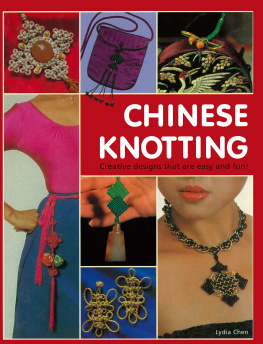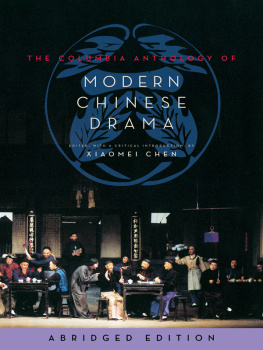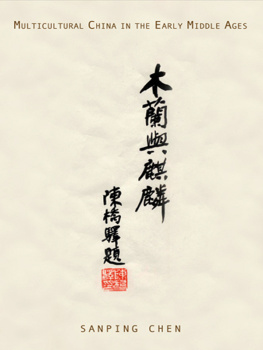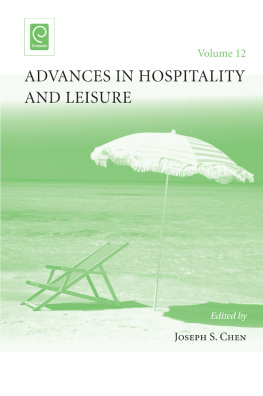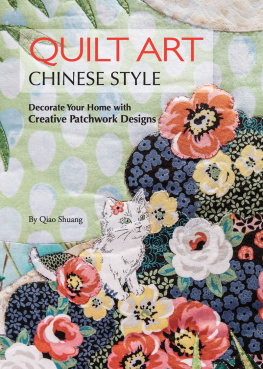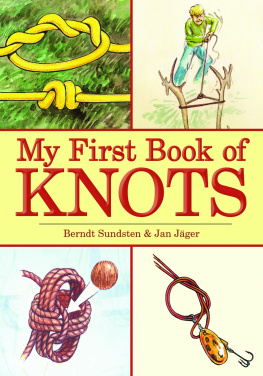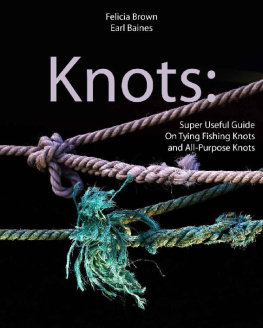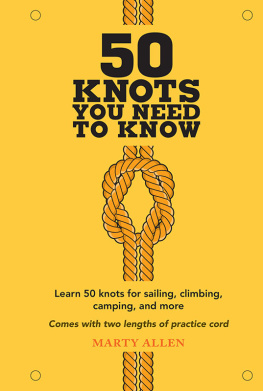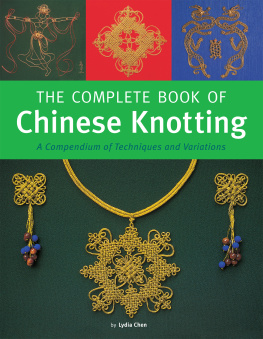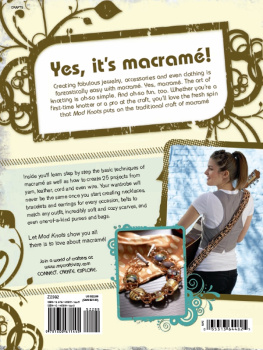Chen - Chinese knotting: creative designs that are easy and fun
Here you can read online Chen - Chinese knotting: creative designs that are easy and fun full text of the book (entire story) in english for free. Download pdf and epub, get meaning, cover and reviews about this ebook. City: Boston;Mass;Enfield;China, year: 2003, publisher: Tuttle Publishing;Airlift, Tuttle, genre: Romance novel. Description of the work, (preface) as well as reviews are available. Best literature library LitArk.com created for fans of good reading and offers a wide selection of genres:
Romance novel
Science fiction
Adventure
Detective
Science
History
Home and family
Prose
Art
Politics
Computer
Non-fiction
Religion
Business
Children
Humor
Choose a favorite category and find really read worthwhile books. Enjoy immersion in the world of imagination, feel the emotions of the characters or learn something new for yourself, make an fascinating discovery.
- Book:Chinese knotting: creative designs that are easy and fun
- Author:
- Publisher:Tuttle Publishing;Airlift, Tuttle
- Genre:
- Year:2003
- City:Boston;Mass;Enfield;China
- Rating:3 / 5
- Favourites:Add to favourites
- Your mark:
- 60
- 1
- 2
- 3
- 4
- 5
Chinese knotting: creative designs that are easy and fun: summary, description and annotation
We offer to read an annotation, description, summary or preface (depends on what the author of the book "Chinese knotting: creative designs that are easy and fun" wrote himself). If you haven't found the necessary information about the book — write in the comments, we will try to find it.
Chen: author's other books
Who wrote Chinese knotting: creative designs that are easy and fun? Find out the surname, the name of the author of the book and a list of all author's works by series.
Chinese knotting: creative designs that are easy and fun — read online for free the complete book (whole text) full work
Below is the text of the book, divided by pages. System saving the place of the last page read, allows you to conveniently read the book "Chinese knotting: creative designs that are easy and fun" online for free, without having to search again every time where you left off. Put a bookmark, and you can go to the page where you finished reading at any time.
Font size:
Interval:
Bookmark:
THE AUTHOR
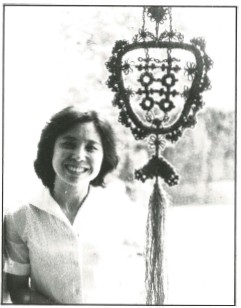
Born in Loching, Chekiang, in 1940, Lydia Chen received her Bachelor of Science degree in agricultural chemistry from National Chung Hsing University in 1963. Her interest in traditional knotting was born when her father-in-law, Chuang Shang-yen, the Deputy Curator of the National Palace Museum, encouraged her to learn how to tie a few simple knots from an elderly Museum custodian. From this modest beginning, she went on to master the art, first learning the 13 knots in ECHO Magazine, and later figuring out how knots ornamenting the antiques she hunted down were tied. She taught knotting at the Shih Chien College of Home Economics from the fall of 1978 through the spring of 1980, and she has had seven exhibitions of her own knotwork three in Taipei and one in New York, Korea, and Singapore respectively. She is today the nations foremost authority on traditional Chinese decorative knotting.
THE ASSOCIATE EDITOR
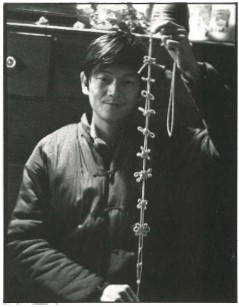
Yao Meng-chia, bom in Taipei, Taiwan, in 1946, received his Bachelor of Arts degree in painting from the National Academy of Arts in 1968. He has been with ECHO since its birth in 1971, and is a key part of the staff. He was responsible for much of the material in the ECHO Magazine articles on Chinese knotting, which included detailed explanations and step-by-step diagrams for the tying of 13 simple knots. With that experience under his belt, he undertook the supervision of all the illustration work in Chinese Knotting, making sure that the step-by-step diagrams that accompany each knot were done correctly and presented in the most lucid manner possible.
AUTHORS FOREWORD
When I was young, writing a book on traditional Chinese decorative knotting was as inconceivable to me as time travel is now. I was too busy climbing trees and playing ball to sit still long enough to tie my shoelaces, let alone a decorative knot.
Even while I was in college, sports continued to occupy most of my thoughts, with perhaps some time spared for my major in agricultural chemistry. No matter how you look at it, both my curricular and extracurricular activities were just about as far afield from folk arts as I could get.
An unexpected twist of events, however, changed the course of my life. It started about ten years ago when Wang Chen-kai, a master knotter from Mainland China, began working at the National Palace Museum in Taipei. My late father-in-law, Chuang Shang-yen, who was Deputy Curator at the Museum, urged me to learn whatever I could from Wang. I did not think that anything would come from it. Still, I had a bit of free time and I thought the knots were attractive, so I began tying my first knots.
Soon I was trying my hand at tying more and more difficult knots, and I found my interest growing. I was thrilled when I learned that ECHO Magazine was doing a series of articles on Chinese knotting in 1976. I bought the issues and practiced tying the 13 simple knots taught in the magazine until I could tie each and every one of them with my eyes closed. From that point on, I was determined to learn everything I could about this ancient art.
In 1978, I received a surprise call from Chang Ching-shih, the dean of Shih Chien College of Home Economics. He had decided to start a course in Chinese knotting, and wanted me to teach the class. Although I was just a novice knotter then, Dean Chang had no one else to turn to. He flattered, chided, and cajoled me, and somehow, against my better instincts, I agreed to take on the task.
Luckily for me there were still three months to go before the fall semester began. I spent that time practicing my knots day and night. I tracked down antiques with knots I had never seen before, and then spent hours trying to figure out how each of them had been tied. I created a few knots of my own, and experimented with a wide variety of cords. Then in September, with knots in my stomach as well as in my hands, I walked into my first class.

Knotting was an idea whose time had come again. The next fall my teaching load at Shih Chien tripled, and people from all walks of life jewelers, clothiers, students, housewives, even businessmen were asking me for private lessons.
It was heartwarming to see such fresh interest in this old folk art tradition. But not everyone has the time or the inclination to enroll in a home economics college, nor could I take on the entire populace as private students. And except for the ECHO Magazine articles, there was no literature on the subject. I thought the time had come to put out a comprehensive instruction manual on the art of Chinese decorative knotting.
Of course, I had neither the experience nor the wherewithal to publish a book on my own. I knew how to tie the knots and how to teach others to tie them, but I knew little about writing, editing, photography, layout, or financing the publication of such a book. ECHO came to my aid again. They said that if I would put together the material, they would handle all the editorial and technical work involved in publishing an English as well as a Chinese edition. By doing so, they have not only earned my gratitude, but the gratitude of everyone who wants to learn Chinese knotting or see the tradition regain its hold on life.

I hope that you will find our effort both informative and practical. If even a handful of people can use this book to find some of the pleasure that knotting has given me, I will be more than satisfied. As I would express it in Chinese, I will feel I have given a brick in exchange for a piece of fine jade.
January, 1981
CONTENTS

Published in 2003 by Tuttle Publishing, an imprint of Periplus Editions by arrangement with Echo Publishing Co. Ltd.
Copyright 1982 Echo Publishing Co. Ltd.
All rights reserved. No part of this publication may be reproduced or utilized in any form or by any means, electronic or mechanical, including photocopying, recording, or by any information storage and retrieval system, without the prior written permission from Tuttle Publishing.
ISBN 0-8048-3399-0
ISBN 978-1-4629-1658-0 (ebook)
Distributed by:
North America, Latin America & Europe
Tuttle Publishing
Airport Industrial Park, 364 Innovation
Drive, North Clarendon, VT 05759-9436
Tel: (802) 773 8930 Fax: (802) 7736993
Email:
Japan
Tuttle Publishing
Yaekari Building, 3rd Floor, 5-4-12 Osaki,
Shinagawa-ku, Tokyo 141-0032
Tel: (03) 5437 0171 Fax: (03) 5437 0755
Email:
Asia Pacific
Berkeley Books Pte. Ltd.
61 Tai Seng Avenue, #02-12
Singapore 534167
Tel: (65) 62801330 Fax: (65) 6280 6290
Email:
09 08 07 06 05 04
7 6 5 4 3
Printed in Singapore
CREDITS: Cover, Huang Yung-sung; pages , illustrations by Li Sheng-ta, Li Li-wen, Lai Chun-sheng, and Kuo Chuan-chu.

Font size:
Interval:
Bookmark:
Similar books «Chinese knotting: creative designs that are easy and fun»
Look at similar books to Chinese knotting: creative designs that are easy and fun. We have selected literature similar in name and meaning in the hope of providing readers with more options to find new, interesting, not yet read works.
Discussion, reviews of the book Chinese knotting: creative designs that are easy and fun and just readers' own opinions. Leave your comments, write what you think about the work, its meaning or the main characters. Specify what exactly you liked and what you didn't like, and why you think so.

